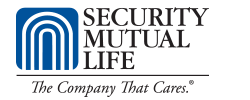Coronavirus Stimulus Package – Paycheck Protection Program Loan Forgiveness
The Paycheck Protection Program (“PPP”) started on April 3, 2020, and received a second round of funding on April 24 from the federal government (see our previous postings). Since that time, there has been a legislative and public outcry that many large companies, including publicly traded companies, were applying for and receiving PPP loans that were intended for smaller businesses. Political pressure has caused some of these companies to return the loans, and the Small Business Administration (“SBA”) has retroactively tightened qualifications and guidelines issued in the form of frequently asked questions (“FAQs”) which can be accessed here. In particular, FAQ #31 states in relevant part: “ . . . borrowers still must certify in good faith that their PPP loan request is necessary. Specifically, before submitting a PPP application, all borrowers should review carefully the required certification that ‘[c]urrent economic uncertainty makes this loan request necessary to support the ongoing operations of the Applicant.’ Borrowers must make this certification in good faith, taking into account their current business activity and their ability to access other sources of liquidity [emphasis added] sufficient to support their ongoing operations in a manner that is not significantly detrimental to the business.”
On April 29, the SBA added FAQ#39 which states: “39. Question: Will SBA review individual PPP loan files? Answer: Yes. In FAQ #31, SBA reminded all borrowers of an important certification required to obtain a PPP loan. To further ensure PPP loans are limited to eligible borrowers in need [emphasis added], the SBA has decided, in consultation with the Department of the Treasury, that it will review all loans in excess of $2 million, in addition to other loans as appropriate, following the lender’s submission of the borrower’s loan forgiveness application [emphasis added]. Additional guidance implementing this procedure will be forthcoming.”
The SBA guidance has clearly placed an emphasis on the fact that PPP loans should only be applied for and granted based upon need, and not simply on the application of the loan proceeds to retain employees and pay operating expenses. Further, the potential of an SBA audit will start when the loan forgiveness application is submitted. In addition, on April 28, Treasury Secretary Stephen Mnuchin stated in a CNBC interview: “It’s the borrowers who have criminal liability if they made this certification and it’s not true.” Note, that in addition to other statutory or regulatory penalties, under the federal False Claims Act, borrowers may potentially be subject to a penalty of up to three (3) times the PPP loan amount for false statements or reckless disregard for the truth or falsity of statements made in the loan application.
On May 13, the SBA added FAQ#46 which clarified the focus on PPP loans in excess of $2 million, stating: “SBA has determined that this safe harbor is appropriate because borrowers with loans below this threshold are generally less likely to have had access to adequate sources of liquidity in the current economic environment than borrowers that obtained larger loans. This safe harbor will also promote economic certainty as PPP borrowers with more limited resources endeavor to retain and rehire employees.”
With this added focus for potential criminal and civil liabilities for applying for and taking a PPP loan that was not “necessary,” business owners are rightfully concerned about compliance. Note, however, that there is a safe harbor for borrowers who may not be able to meet the good faith certification requirements. Loan proceeds must be returned by May 18 (as extended by FAQ#47 published on May 13). In addition, FAQ#46 makes clear that: “If SBA determines in the course of its review that a borrower lacked an adequate basis for the required certification concerning the necessity of the loan request, SBA will seek repayment of the outstanding PPP loan balance and will inform the lender that the borrower is not eligible for loan forgiveness. If the borrower repays the loan after receiving notification from SBA, SBA will not pursue administrative enforcement or referrals to other agencies based on its determination with respect to the certification concerning necessity of the loan request.”
Finally, on May 15, the SBA released the 11-page PPP Loan Forgiveness Application which can be accessed here. Business owners who have received a PPP loan, whether less than or greater than $2 million, may be wise to consult with their attorney and CPA for assistance while completing the application.
